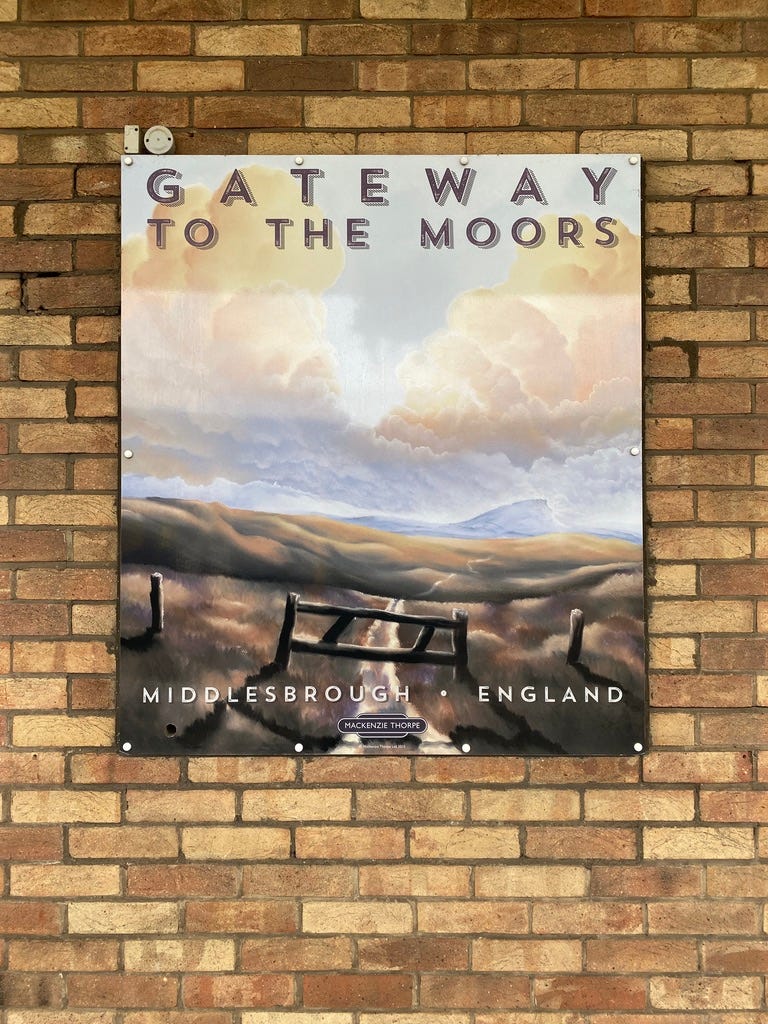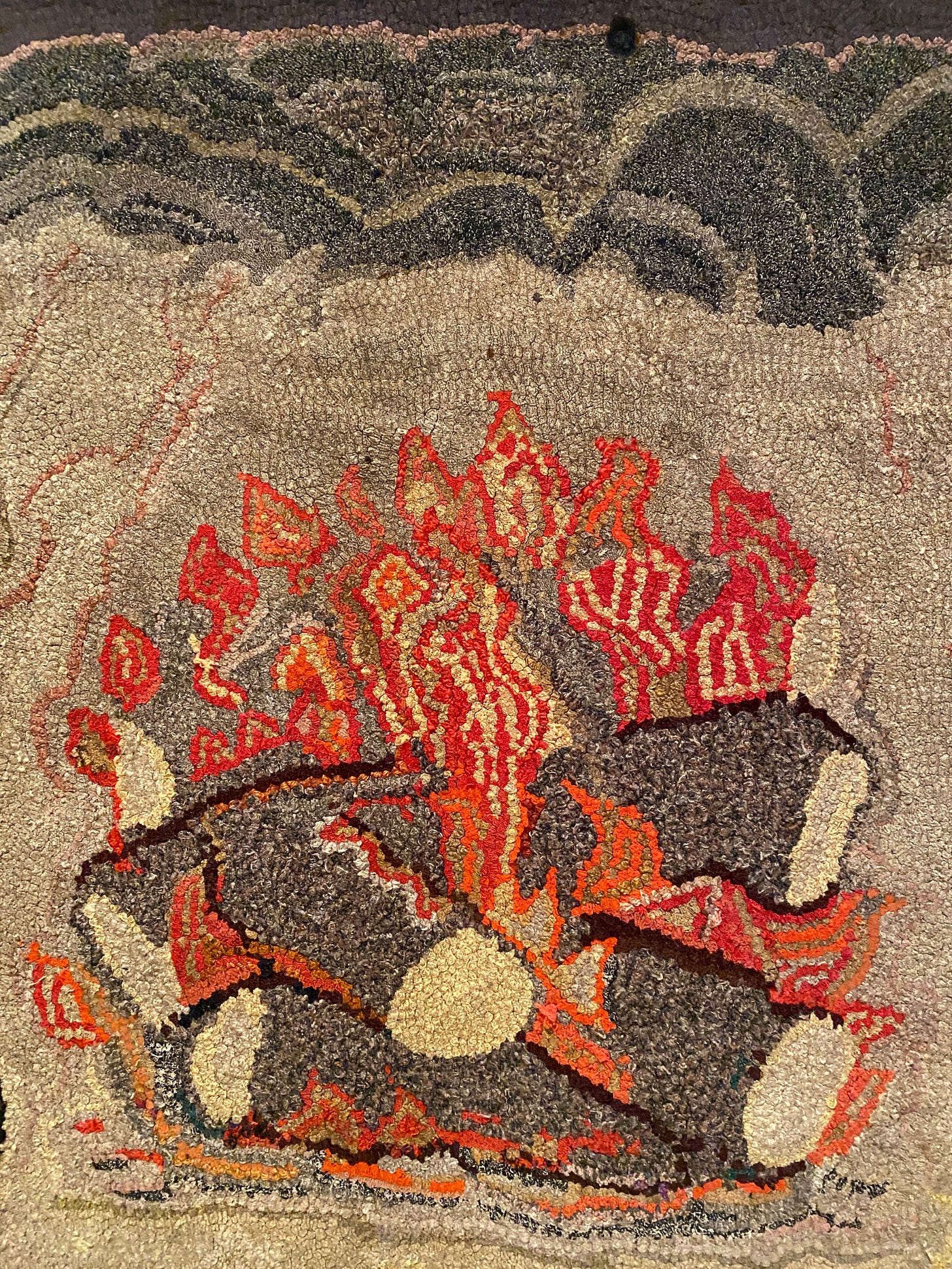rule of three
I once had a plan to write a whole series of guides to provincial towns and cities, a ‘Brocket in your Pocket’ type thing which I now think could work well as a simple pdf on your phone or, if you’re like me, on paper (why do the young ‘uns laugh so much when we print off train and cinema tickets?).
[detail of the North Eastern Railway tiled map (1900), Middlesbrough station]
In fact, it could just be ultra-simple and comprise three things for each place, three because as any fule kno that’s what worked so well for Shakespeare. If you can apply the rule of three to a visit, a jaunt, to somewhere, no matter how poor or negative its reputation (justified or not) and how unprepossessing it may appear, there will always be something worth looking for, appreciating, enjoying. Plus, three is a good, manageable number to make a day or even a couple of hours satisfying and rewarding.
I’ve been thinking about all this while reading about Arnold Bennett in reaction to seeing Virginia Woolf’s comments on him in her diaries, and knowing the general snobbery of the Bloomsbury group members towards writers from the provinces. Her self-congratulatory tone when she says she’s invented the term “tradesmen of letters” for Bennett and JB Priestley made me see red. It’s a very clever and pithy put-down suggesting that they could only ever enter a house of literature via the tradesman’s entrance while the Bloomsbury lot went in through the front door as their right. (There is a lot more to ‘unpack’, as they say.)
Bothered by Woolf, I got a copy of Margaret Drabble’s 1974 biography of Bennett. She is marvellous on the Bennett vs Woolf feud which went on for years but also, as a writer from a provincial city herself (Sheffield), she is superb on provincial life and culture, and defends it against the London/self-appointed highbrow elite. I love it when people write or speak warmly about often still-ignored provincial towns and cities without irony or snobbery or condescension, but with affection, humour, clear-sightedness and genuine interest, seeing the mixture of ‘dereliction and beauty’, as she puts it, in places which have served their uses (coal, textiles, iron, steel, ships) then been left out to dry.
[art on Middlesbrough station platform]
I read most of it on trains up and down to Middlesbrough this week - it’s amazing how far you can travel in a short space of time when the trains and connections work. (Bennett also adored train travel, a man after my own heart in so many ways.) Now, I’ve never been to Middlesbrough before, but very much wanted to see the Winifred Nicholson rag rug exhibition there. I am also always game for a visit to a provincial art gallery and museum (the starting point/s for each of my Grand Provincial Tour guides), so did a little research and made a list of sites of potential interest. There’s not a lot I can’t be curious about when I’m visiting a new place, so the list was decent.
Sadly, though, there were no baked goods this time. I would have had a stottie but The Stottie Company at the station has closed, as have other good things in Middlesbrough, and who knows for how long (eg the central Carnegie Library which the Pevsnser guide raves about and the Transporter Bridge visitor centre). All very much a sign of the times. But here are my three great things:
Middlesbrough Institute of Modern Art
mima (yes, in somewhat coy lower case) is all glass and architectural cleverness on the outside, but there is no natural daylight in any of the galleries. It has a fine collection of ceramics displayed in dim, unlit cabinets which look like swimming pool lockers and go too far back, too high, too low so you can’t see what’s in them or make out what’s on the little tags, and are all a bit too much like my kitchen cupboards. I left a comment about this, along with details of my gender and sexual orientation as requested on the feedback form. I like to oblige. Actually, these forms drive me mad. What does all this have to do with the price of eggs - or even just wanting to see some rag rugs?
And they really are worth seeing. It is so good to see a provincial art gallery taking up a theme like this. A traditionally Northern, domestic craft done by ordinary people not letting any textiles go to waste, and one which is now having something of a (mini) revival, although it’s so relevant and in tune with today’s world that I’m amazed it’s not being more widely embraced. (I’ve written on the subject before here, here, and here).
The exhibition is presented through the connection with Winifred Nicholson, a clever way to catch people’s attention. The rugs themselves are wonderful: surprisingly large, sturdy, and beautifully made in often simple, naive designs (the craft lends itself to folk art motifs and children’s drawings) with all sorts of fabrics in small, tight, neat loops - the closer you get, the more variety of weave, texture, and colour you see. Some are a little worn, making you think of all the people who have sat on or stood by them in front of fires, ranges or ovens. One even has a burn mark in it, perhaps where a hot coal leapt out of a grate (top, above).
There’s a lovely book to go with the exhibition which places Winifred Nicholson at the centre of this post-war Cumbrian rag rug revival (the exhibition goes to Tullie in Carlisle next April). In many ways the rugs are a surprise after her luminous, delicate paintings, but in fact express a different aspect of her love for the landscape of Cumbria (or Cumberland as it was until 1974).
Tees Transporter Bridge
In 1986 (1986! had they learned nothing from the 1960s eg The Sack of Bath?), the huge A66 road was built through the northern end of the town with all its fabulous C19 buildings around the Royal Exchange (flattened in the process, others are still there but empty). This effectively cut off the original old town, now sandwiched between the new road and the river to the north, from the later, much larger C19 development to the south.
(‘The Old Town Hall’ (2003) by Margaret Harrison, now even more isolated, derelict, and overgrown)
What a terrible effect this has had. I went under the flyover and almost immediately into total wasteland where the old, abandoned and decaying town hall has been left high and dry, now stranded and surrounded by overgrown empty ground, and beyond this are the vast, weed-strewn areas where the huge ironworks and salt works and steel works once were.
I did this to get to the magnificent Transporter Bridge, opened in 1911 and originally painted red but now blue, constructed to replace the ferries which carried the workers across the Tees. The gondola which went back and forth could transport up to 200 people (more before cars took up space) over the river in less than two minutes. The scene on the bridge in Billy Elliot is almost timed to perfection.
It’s now closed (surprise!). (There is also a walkway across the top (also closed atm) but just looking at the staircases gives me vertigo.) It’s the Middlesbrough landmark, it’s emblematic of the ‘Ironopolis’ part of its industrial history, and like the old town hall, is now isolated and purposeless. It’s also going to cost a lot to keep it upright and safe. But it’s magnificent, and I’d be first in the queue to travel on it with ‘Swan Lake’ as the soundtrack should it ever reopen.
Middlesbrough Railway Station
The station (1877) is just north of the thundering A66, and boxed in by it. But goodness me, it’s a real beauty. In many ways it could be the grand station of a minor county town, with its mellow stone, carriage ramp, ‘dignified Gothic composition’ (Pevsner), amazing hip-roofed booking hall with high hammerbeam roof. It has a wonderful white-tiled pedestrian underpass, an exit on both sides (although the south side is the grander side and there used to be a portico), and lovely old ironwork columns. There’s elegant 1950s concrete, too, because it was bombed in 1942, but it all works as a whole.
[Kiosk and newspapers at Marylebone Station in A Hard Day’s Night (1964)]
What makes it even more special is the Most Creative Station programme which means there’s art everywhere. There’s Kiosk, a life-size model of one of the old newspaper kiosks where you could get your reading matter, sweets, and cigarettes for your journey, which functions as a print studio, reproductions of paintings on the platform, moquette patterns in waiting rooms and stairwells, an installation made with used tickets, and an art gallery at the end of Platform 1 which then extends into a building housing twelve or so artists’ studios. It’s a fantastic way to use the space, an original approach to engaging with local artists, and a means of brightening up passengers’ journeys. Would that more stations used former waiting rooms and parcels offices in equally imaginative ways.
The rule of three holds true.
Happy Sunday!
PS Contrary to appearances, my head is not firmly buried in the sand. It’s just that I cannot bear to add to the slag heap of commentary about this week’s major event.











Thank you for another interesting read. I love the Bennett/Woolf feud. Hopefully he didn’t give two hoots about her snobbery - he was the one who made the money from writing even if she eventually got the literary glory.
It’s easy to forget he was a national treasure - I read somewhere that they put straw down to muffle the sound of traffic on the street as Bennett lay dying in his London home.
And he’s forever associated with a delicious omelette, created for him at the Savoy, while poor Ginny makes me think of dreadful meals with ‘shape’ for pudding.
That was a lovely read this morning and I now want to see the rag rug exhibition.
I read it out to my husband as he wants to see the transporter bridge. Did you go on a day trip?
btw if you’re looking for interesting places, a mine of information/inspiration can be found here:
https://diamondgeezer.blogspot.com/?m=1
we’ve had many days out after reading DG’s blog.